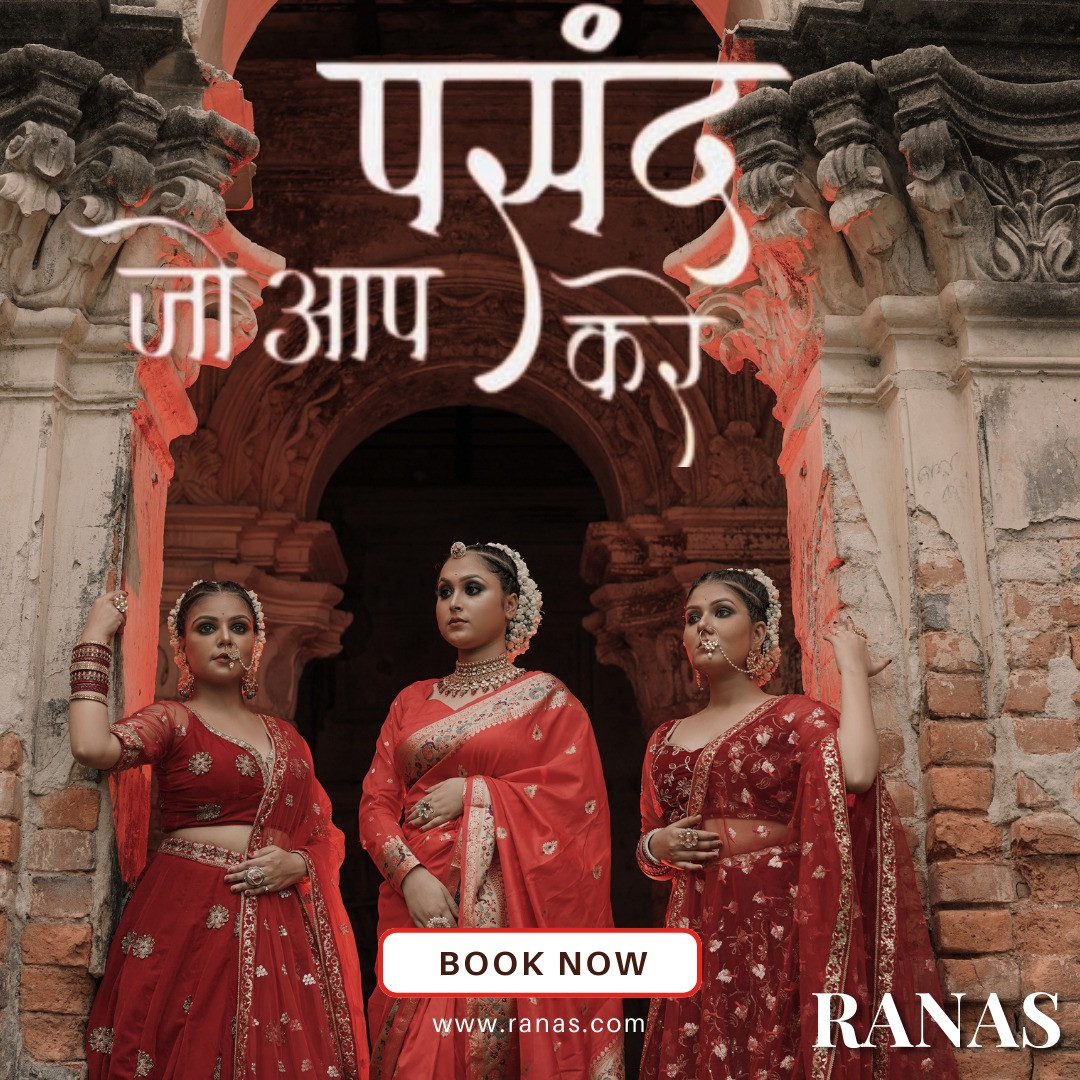In the kaleidoscope of Indian fashion, certain garments stand out not just for their aesthetic appeal but also for their deep cultural roots. One such timeless creation is the Leheriya saree. Originating from the colorful land of Rajasthan, Leheriya sarees are a celebration of vibrant hues, intricate designs, and traditional craftsmanship. Let's take a journey into the mesmerizing world of Leheriya sarees, exploring their history, significance, making process, popular variations, and styling tips.
History and Significance
The word "Leheriya" comes from the Rajasthani term "leher," meaning wave. This aptly describes the characteristic wave-like patterns that adorn Leheriya sarees, symbolizing the ebb and flow of life. Historically, these sarees were associated with the Rajputana royalty and were worn during festive occasions and ceremonies. Over time, they became popular among women across different strata of society, cherished for their beauty and cultural significance.
Leheriya sarees hold a special place in Rajasthani culture, especially during festivals like Teej and Gangaur. They are also an integral part of bridal trousseaus in Rajasthan, signifying prosperity, happiness, and marital bliss. The intricate patterns and vibrant colors of Leheriya sarees reflect the rich heritage and artistic prowess of Rajasthan's craftsmen.
Making of Leheriya Sarees
The making of a Leheriya saree is a labor-intensive process that involves skilled artisans and traditional techniques. The fabric used is usually lightweight and breathable, such as chiffon, georgette, or silk, allowing for the fluid drape that is characteristic of sarees.
The first step in creating a Leheriya saree is tying the fabric in a specific manner to create the desired wave patterns. This technique, known as "bandhani" or tie-dyeing, requires precision and expertise. The tied fabric is then dyed in vibrant colors using natural or synthetic dyes, with each color representing a different emotion or occasion.
After dyeing, the saree is carefully untied to reveal the intricate wave patterns, which are a testament to the artisan's skill and creativity. Additional embellishments like zari work, mirror work, or embroidery may be added to enhance the saree's beauty and elegance.
Popular Variations
While the classic Leheriya saree features diagonal wave patterns in bold colors like red, blue, yellow, and green, there are several variations that cater to different preferences and occasions.
Single Color Leheriya: This variation features subtle wave patterns in a single color, creating a sophisticated and understated look. It's perfect for formal events and office wear.
Multi-Color Leheriya: As the name suggests, this type of Leheriya saree combines multiple colors in vibrant combinations, making it ideal for festive occasions and celebrations.
Leheriya with Zari Border: Adding a touch of opulence, Leheriya sarees with zari borders or pallus are favored for weddings and grand gatherings. The contrast between the shimmering zari and the colorful waves creates a stunning visual impact.
Leheriya Bandhej: This variation combines the Leheriya wave patterns with traditional Bandhej tie-dyeing techniques, resulting in a unique and intricate design.
Styling Tips
Styling a Leheriya saree involves striking a balance between tradition and modernity, showcasing the saree's beauty while reflecting personal style. Here are some tips to help you create a stunning look with a Leheriya saree:
Blouse: Opt for a contrasting blouse color to make the saree's colors pop. You can choose a blouse in one of the saree's hues or go for a complementary shade for a harmonious look.
Jewelry: Traditional Rajasthani jewelry such as Kundan, Polki, or Meenakari sets beautifully complement Leheriya sarees. You can also mix traditional and contemporary jewelry pieces for a modern twist.
Hairstyle: A classic bun adorned with flowers or traditional hair accessories adds an elegant touch to your Leheriya saree ensemble. You can also experiment with braided hairstyles or loose curls based on the occasion.
Footwear: Depending on the event, you can pair your Leheriya saree with Kolhapuri sandals for a casual look or embellished heels for a more formal appearance.
Draping Style: While the Nivi drape is timeless and versatile, you can explore different draping styles like the Gujarati or Rajasthani style to add flair to your saree ensemble.
In Conclusion
Leheriya sarees encapsulate the essence of Rajasthan's vibrant culture, weaving together tradition, artistry, and beauty. Whether worn during festive celebrations, weddings, or cultural events, these sarees are a testament to India's rich textile heritage and the skill of its craftsmen. With their timeless appeal and timeless elegance, Leheriya sarees continue to enchant women across generations, making them a cherished wardrobe essential for those who appreciate art, culture, and craftsmanship.
For more info:- rajputi poshak




